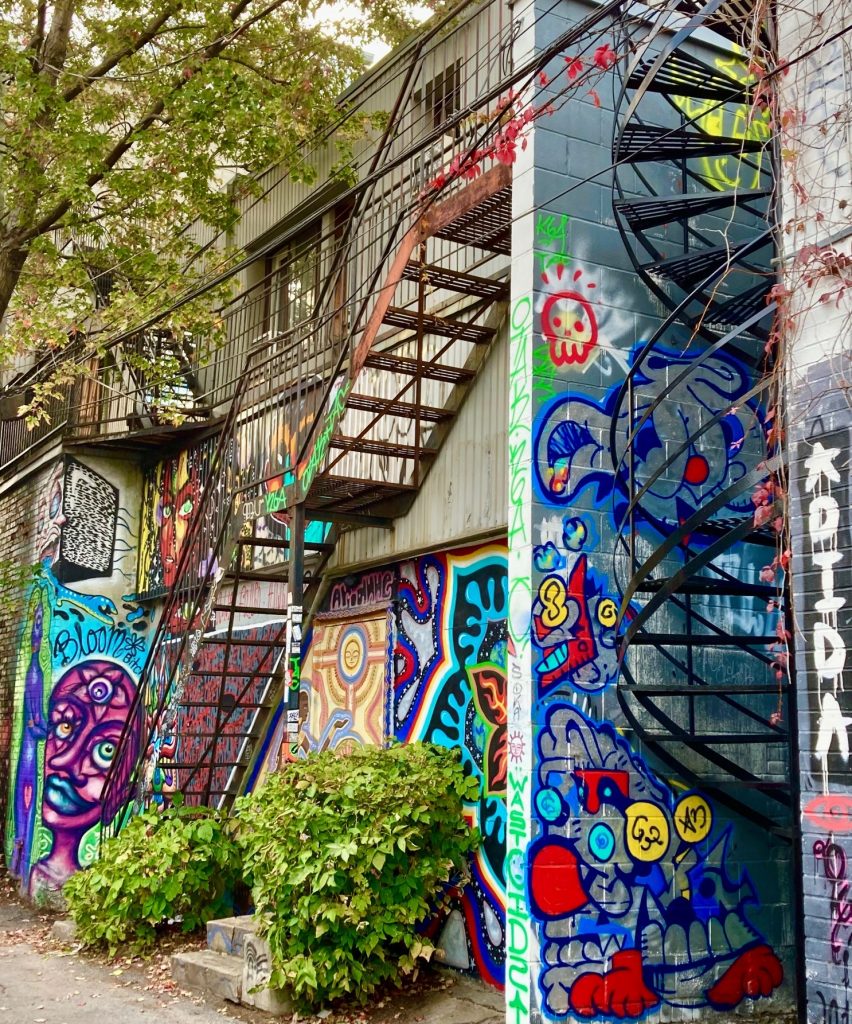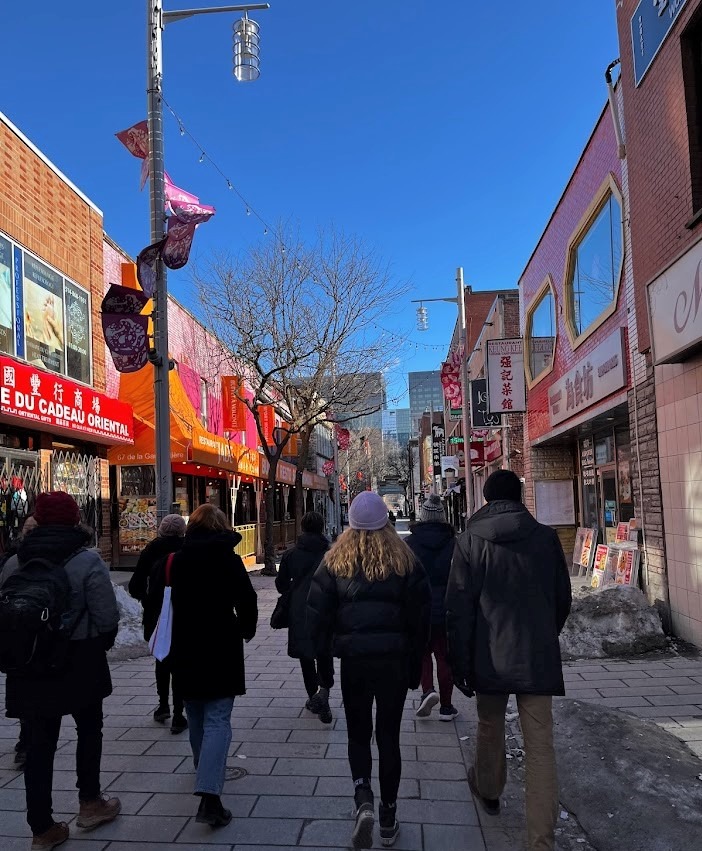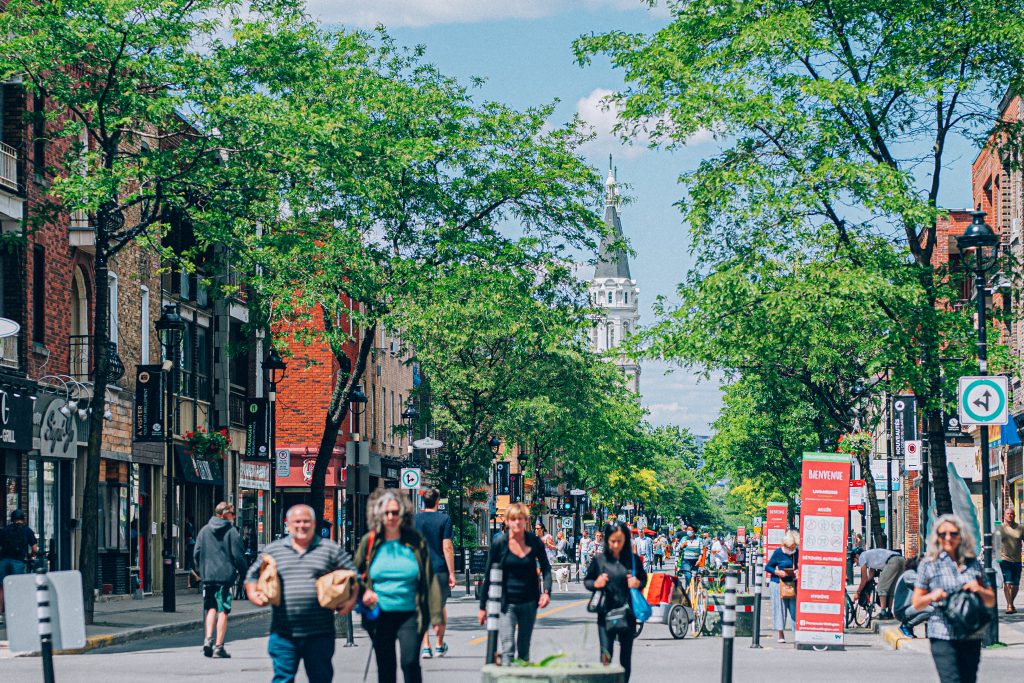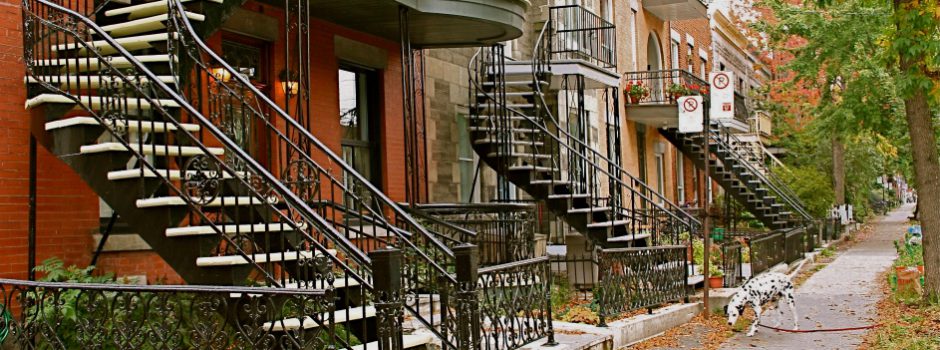Montréal’s Neighbourhoods
Would you like to explore a specific area of Montréal on foot with one of our professional guides? Whether you’re a tourist or a Montrealer, you will be surprised by everything Montréal’s neighbourhoods have to offer.
Aside from our popular Old Montréal Private Walking Tour, there are many other neighbourhoods worth visiting. Mile-End, Plateau, Little Italy, Griffintown, Hochelaga-Maisonneuve, and the list goes on.
Are you a Montrealer? Go on an adventure in your own city and discover its many hidden treasures! Are you a tourist? These tours offer you authentic Montréal experiences!
How to reserve your private tour
Don’t hesitate to get in touch! We will customize a walking tour for you, either to get off the beaten path or to visit some more classic areas. Choose the day and time that suits you, subject to guide availability.
Rate: $248 including taxes for the private guide service of 2 hours (rate per group and not per person). Gratuity is customary (amount at your discretion).
A few visits of Montreal’s neighbourhoods
Here are suggestions for private walking tours in some of Montréal’s neatest neighbourhoods:
Griffintown and the Lachine Canal
 Explore a neighbourhood in the midst of transformation and discover the legacy of the Lachine Canal. Now a designated national historic site, find out how the canal went from industrial corridor to leafy urban park.
Explore a neighbourhood in the midst of transformation and discover the legacy of the Lachine Canal. Now a designated national historic site, find out how the canal went from industrial corridor to leafy urban park.
You’ll also understand how the canal shaped neighbouring areas, like Griffintown, by attracting Irish immigrants, and how the industries lining its banks catapulted Montréal into the role of Canada’s leading metropolis in the 19th century. A walk full of beautiful and interesting discoveries awaits you.
 Hochelaga-Maisonneuve
Hochelaga-Maisonneuve
To the east of the downtown lies the former municipality of Hochelaga, which was annexed to Montréal in 1883. Next to it lies Maisonneuve – a spinoff of Hochelaga – itself annexed in 1918. These twin working class neighbourhoods share an industrial past as well as a strong community spirit.
Stroll along Ontario Street and stop into Maisonneuve Market to soak up the atmosphere. The converted factory buildings, grand churches, and opulent Beaux-Arts buildings will reveal a story of hard work, ambition, and the dream of a model city.
© Sarah Montpetit
Authentic Little Italy
 Follow your guide for a unique trip through a land of good pasta, good wine and la dolce vita without even leaving Montréal! This visit into the heart of Little Italy will allow you to discover a well-established community. Bella Italia… Montréal style!
Follow your guide for a unique trip through a land of good pasta, good wine and la dolce vita without even leaving Montréal! This visit into the heart of Little Italy will allow you to discover a well-established community. Bella Italia… Montréal style!
From Dante Street to Saint-Laurent Boulevard, succumb to the charm of Little Italy’s trattorias, boutiques, and cafés, and the quarter’s unique ambiance. Stop at the famous Jean-Talon Market and visit Madonna della Difesa church (upon request and according to availability).
The story of the Mile End
The Mile End was once the cradle of the textile industry. Nowadays, it is one of the most trendy and eclectic districts of Montréal. Feel its creative energy and bohemian spirit while you walk down Bernard or Fairmount Avenue with your guide.
This lively neighbourhood is filled with browse-worthy restaurants, cafés, boutiques and vintage shops. Learn more about its industrial working-class past, the origin of its name, its rich artistic and multicultural aspects, its landmarks and hidden treasures. In short, discover what makes the Mile-End such a unique place.
Plateau Mont-Royal
 The Plateau Mont-Royal is a hip neighbourhood, a place where artists, young urban professionals, and intellectuals hang out. It’s a place where cafés, trendy shops, good taste, and a joy for life all come together to create a beautiful mix. Just a few blocks from the city centre, it’s the best place to get a feel for how Montrealers live, and to feel the city’s welcoming vibe.
The Plateau Mont-Royal is a hip neighbourhood, a place where artists, young urban professionals, and intellectuals hang out. It’s a place where cafés, trendy shops, good taste, and a joy for life all come together to create a beautiful mix. Just a few blocks from the city centre, it’s the best place to get a feel for how Montrealers live, and to feel the city’s welcoming vibe.
You’ll also discover the hidden side of Montréal through anecdotes and urban legends as you criss-cross the area by the alleyways. On the program: hidden gardens, carriage gates, sheds and clotheslines, pawprints, murals and graffiti.
© Bruno Lajeunesse
 Beyond exotism : Chinatown
Beyond exotism : Chinatown
A stroll on foot through Chinatown is the best way to discover the rich past of this community and to fully appreciate the unique sights, sounds, and smells of this part of town. This lively quarter certainly contributes to making Montréal a cosmopolitan city – it’s one of the many jewels in its multicultural crown.
Did you know that passing through the “Portal of the Sun” ensures wealth and prosperity? Follow your guide to learn more about the history of Chinese immigration and how the community has integrated into the city.
Golden Square Mile and the Anglophone bourgeoisie of the 19th century
At the end of the 19th century, roughly 70% of the wealth of Canada was in the hands of a select few who lived in an area covering approximately one square mile, located on the flanks of Mount Royal. Accompanied by your guide, discover the streets and the residences that evoke this prosperous period in Montréal’s history.
A stroll through the neighbourhood will allow you to appreciate the elegance and richness of the varied architectural styles. From Italian Neo-renaissance to Classical Revival, all the way to Château Style and all manner of Victorian eclecticism, a smorgasbord of styles is on the menu!
Little Burgundy : Railways, Jazz and Urban Development
Explore this former industrial sector in the South-West and its two centuries of rich history: the establishment of the first French settlers, the impressive industrial development of the 19th century, the contribution of the predominantly Black population to Montreal society in the last century, and the fresh wind currently revitalizing this charming neighborhood. Visit, among other places, Notre-Dame Street with its array of tempting shops, the Stelco park and ball tower, the must-see Lachine Canal, the Georges-Vanier housing complex, and admire the murals of Montreal’s illustrious jazzmen Oliver Jones and Oscar Peterson.
Montréal and the St Lawrence river seen for Saint Helen’s Island
By exploring the city’s foundation, its privileged strategic location, its economic development, its accelerated growth in the 19th century, the maritime route, Expo 67 and Notre-Dame Island, learn more about the fundamental role of the Saint Lawrence River in the history and development of Montreal, from 1642 to the present day, through this tour offering a unique perspective from Saint Helen’s Island, which you will also hear about. Take the opportunity to admire the breathtaking view of Montreal and the Saint Lawrence River, then discover the secret and peaceful places hidden on Saint Helen’s Island.
Verdun, between city and nature
 If the presence of the river explains why Indigenous people stopped in Verdun and why the first settlers established themselves there, it is still the river and access to its banks that partly explains the remarkable growth that Verdun has experienced in recent years. Annexed to Montreal in 2002, Verdun has a distinct history. With heritage buildings among the oldest in the city and interesting initiatives to improve biodiversity, you will see during this tour what makes this borough so unique.
If the presence of the river explains why Indigenous people stopped in Verdun and why the first settlers established themselves there, it is still the river and access to its banks that partly explains the remarkable growth that Verdun has experienced in recent years. Annexed to Montreal in 2002, Verdun has a distinct history. With heritage buildings among the oldest in the city and interesting initiatives to improve biodiversity, you will see during this tour what makes this borough so unique.
© Caroline Perron, Tourisme Montréal
From Faubourg à m’lasse to the Village
This neighborhood of Montreal, known by various names such as Faubourg-Québec, Quartier Sainte-Marie, Faubourg à m’lasse, Centre-Sud or Village, is emblematic of the resilience of its inhabitants. Developed in the 18th century outside the city walls, it was an industrial and working-class neighborhood until the mid-20th century. After the relocation of port activities to the east, the Sainte-Marie neighborhood experienced a period of decline. In the 1970s and 1980s, gay people found refuge in this neighborhood to escape the prevailing homophobia. Thus was born the Village, which has since become a place of free expression and tolerance.
During this tour, we will discover significant places in the neighborhood and the Village, evoke the resilience of its inhabitants as well as the freedoms won and friends lost. We will pay tribute to those who shaped and transformed this neighborhood.
_ _ _

